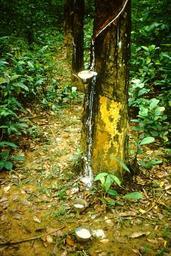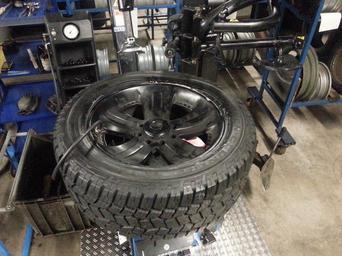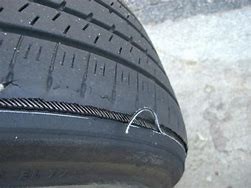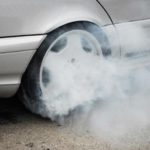
Natural Rubber certainly being the first major raw component in producing a tire, and the second component would be the mixing of Synthetic Rubber. This is the start of how tires are made
These two components are mixed together to create the proper characteristics of Strength, Resilience, and Wear Resistance.
Not just a rubber tire. Tires are found on SUVs, trucks, Cars, Buses, Aircraft all kinds of transportation vehicles that come into contact with Earth’s formation of terrain.
This Raw Rubber material is found in the bark of the Rubber Tree, and it is a milky liquid substance in color. Now mix in Synthetic Rubber and some Acids and a few other ingredients and the makings of a tire start to solidify.
Put that forming Rubber between a press to squeeze out excess water (moisture) and then form into bales then dried and stacked inside Tall Smoke Houses for curing.
Carbon Black is another ingredient added to the mix of the Tire. This is a fine black soft powder and is created (If You would like to know) when Crude oil or Natural gas is burned with a limited amount of oxygen.
This causes an incomplete burning process that causes Fine Soot to form. Huge amounts of this soot are used to make the Tire Black. Large quantities are required for the Manufacturing process. Huge as in Rail Cars full of Black Soot shipped to the waiting Tire Manufacturers’ outlets.
Sulfur is an added note, plus other chemicals when mixed with the Raw Rubber and then heated develop characteristics. Such as Friction, Flexibility, and protection from Ultraviolet Rays, just to mention a few, giving You a glimpse of some characteristics without boring you too much.
The Design of Tire
has 3 main features of your basic passenger Tire. #1 is the Tread, and #2 is the Body with the sidewalls. #3 The Beads. Tread the raised pattern and makes contact with Earth’s surface. The Body supports the tread and gives the Tire its specific shape for its application. Learn more about your tires here <=======

The Beads are the Special Rubber coated strength that forms around the metal-wire bundles, which allow the Bead to marry up to the Wheel Rim and to hold Air when inflated to manufacturer Specifications.
Remember safety is always the number 1 priority when it comes to Tire meeting and greeting the road surface. Oh yeah! just a quick added note, there are about 20 different types of Rubber Compounds that may find their way into the composition makeup of the Passenger Tire.
The Manufacturing Process
A passenger Car, SUV, Truck, or Bus Tire is manufactured by the beginning process of wrapping multiple layers of Specifically formulated rubber around a specific metal drum within a tire forming machine.
A skilled Human (assembler) lays into position the cut strips of rubber to form the different parts of the Tire makeup.
Here is a Video on “The Manufacturing Process”
Quality Control Approval. Where it begins, with the supply of raw materials. A Tire manufacturer will be very careful and seek out the company suppliers who have test procedures in place, which will validate detailed certification composition and properties of the Raw Materials, used in the building of the Tires.
In order for Certification to be properly administered, the Tire company chemists conduct random testing of the raw materials as they are delivered.
During the batch mixing process, rubber samples are drawn for testing, to confirm that all the different properties such as Tensile, Strength, and Density are qualified. Each Tire assembler is responsible for the correct usage of components.

He uses Code Numbers and a comprehensive computer system that controls record keeping, for the plant managers to trace back to specific batches of Tire rubber.
The Final Test, on the new Tires, will be done on 100 tires chosen to form the newly manufactured batch of Tires. A couple of tests are performed in the so-called Destructive Testing Area.
This Destructive Testing Zone consists of #1 slicing the Tire open to check for air pockets between the layered rubber body plies. A # 2-second test would be a tire being machine-pressed onto metal studs to determine puncture resistance testing.
Still, another test #3 would be to spin the Tire rapidly and then press the Tire down onto a metal drum to test the mileage life of the Tire and of course, other performance characteristics that could rear their head and possible other Tire defects conditions before being presented to the Motoring Public
The conclusion
To the end of this post. I find that there can never be too much testing on Tires that we as drivers depend on every time we get behind the wheel of our vehicles.
Affiliate Disclosure – When You click links on this site and buy products, you may receive an affiliate commission through Amazon.com. You will not pay more by buying when You click my links. When I suggest certain products, it is because my research or personal experience has shown that they may be helpful to You. Thank You for your support.

That Rubber Tread that grounds us all on the terrain we travel on is a safety concern that we all put a lot of trust into. We are only as safe as the Tires that Meet and Greets the Road with unconditional safety and peace of mind driving.
If You find this post of interest and maybe have any questions or comments let me know, You will find the comment box down below my little helper.
If You Want To Find Out About More Automotive Stuff Then “GO HERE”

Thanks For Now…..Doug
